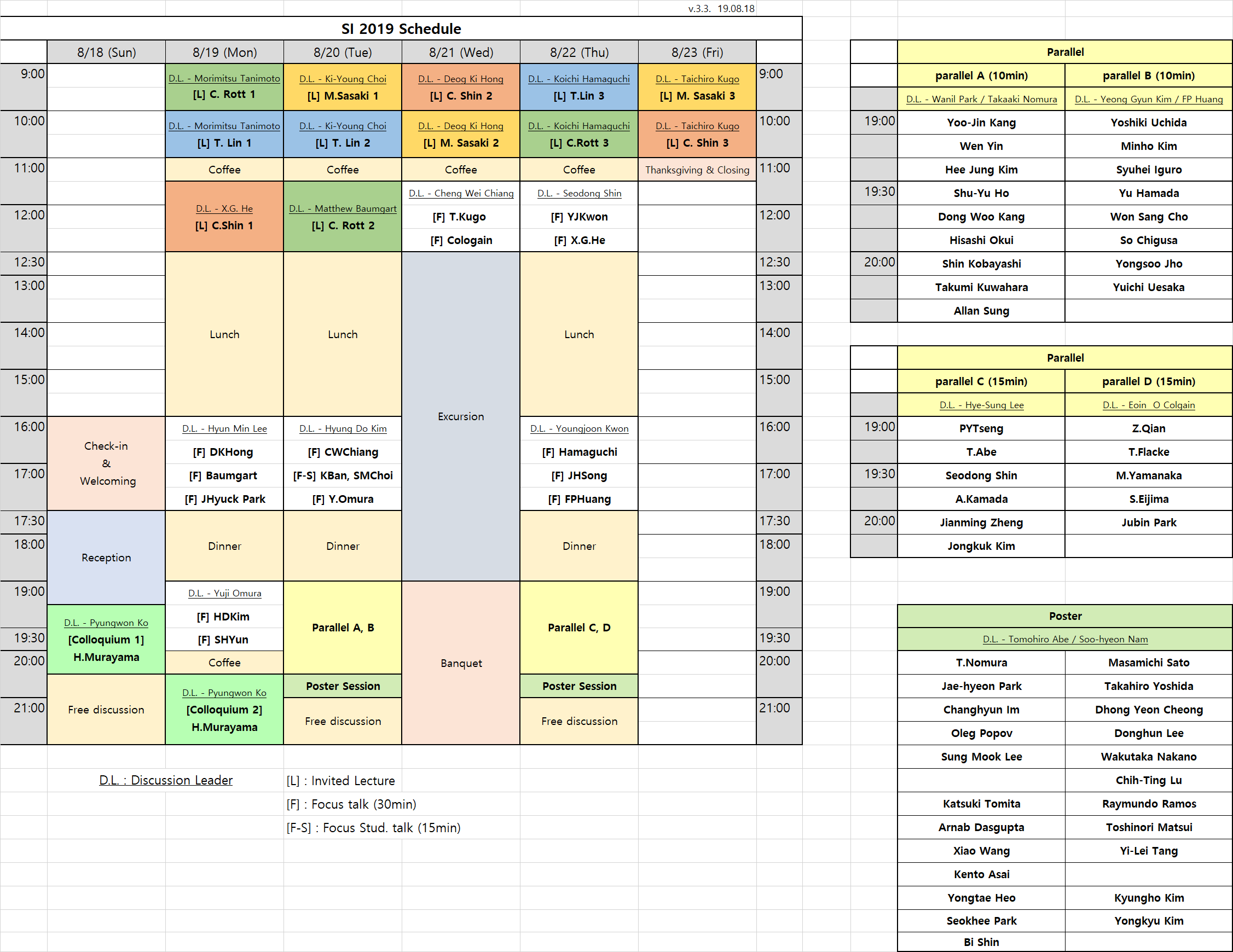25th International Summer Institute on Phenomenology of Elementary Particle Physics and Cosmology (SI2019)
SANDPINE, Gangneung, Korea
Welcome to the 25th International Summer Institute on Phenomenology of Elementary Particles and Cosmology (SI2019). The Summer Institutes have been held every summer since 1995. It aims at an Aspen-type Institute in Asia. The purpose of the Summer Institute is to promote communications and discussions on research among participants, rather than to give pedagogical lectures for students. Therefore the scientific program is relaxed to keep enough time for discussions. We hope that the new ideas and research activities will be initiated from this institute.
------------------------------------------------------------------------------------------------------
** Notice on registration**
The registration fee should be paid at the conference site by CASH(KRW) at your arrival.
------------------------------------------------------------------------------------------------------
[Notice on July 6] Timetable
Please notice that the program of SI 2019 has been uploaded in the 'Timetable' menu of the Indico. Please check it carefully, and in case your talk/poster presentation is in conflict with your travel schedule, please let us know before July 12th.

Other information (e.g. meal plan, nearby restaurants, Banquet, excursion and other useful pieces of information) will be updated on the SI 2019 webpage.
Please do not hesitate to contact us when you have any inquiries about SI2019.
-----------------------------------------------------------------------------------------------------
[Notice on July 10] Poster session
To Poster Presenters & Discussion Leaders of the poster sessions,
* Please put your posters at the prepared place from 15:00, Tuesday (Aug 20th) to 21:00, Thursday (Aug 22nd).
* Please stand by next to your poster in 20:30-21:00 on Tuesday and Thursday after the parallel sessions and discuss with the visitors.
* Discussion leaders will examine your posters and notify the best 3 posters at the closing session of SI2019.
[Notice on Aug 23] Best Poster Award Recognitions
- Arnab Dasgupta (Seoul Tech.) "Leptogenesis from Dark Matter Annihilations in Scotogenic Model"
- Dhong Yeon Cheong (Yonsei U.) "Criticality and Primordial Black Holes in Higgs-R2 Inflation"
- Donghun Lee (Yonsei U.) "Probing sterile neutrino in meson decays with and without sequential neutrino decay"
-----------------------------------------------------------------------------------------------------